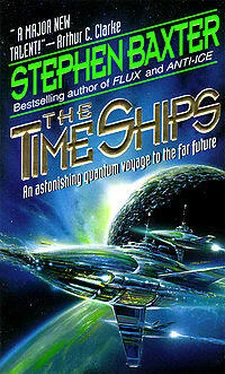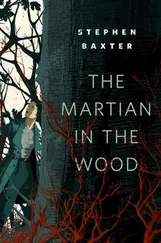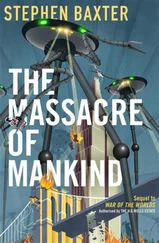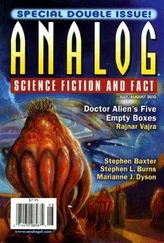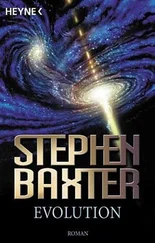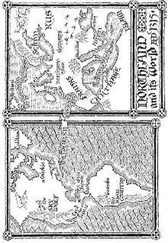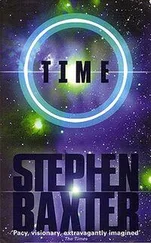And the Morlock uttered a queer, gurgling word in his own language; he spun in his chair and stood up in a rapid, liquid movement that made him seem more animal than human. Filby blanched, and I saw Moses’s fingers tighten around the book he held.
“Gödel — is he here?”
“He’s in the Dome, yes. In fact, he’s not a quarter-mile from this spot in Imperial College.” I described the Babble Machine show I had seen.
“A fission pile. That is it,” hissed Nebogipfel. “I understand now. He is the key — Gödel is the key to everything. It must have been him, with his insights into rotating universes—”
“I don’t see what you’re talking about.”
“Look: do you want to escape from this dreadful History?”
I did — of course I did! — for a thousand reasons: to escape this dreadful conflict, to try to get home, to put a stop to time traveling before the inception of the insanity of Time War… “But for that we must find a Time Machine.”
“Yes. Therefore you must get us to Gödel. You must. Now I see the truth.”
“What truth?”
“Barnes Wallis was wrong about the Germans, Their Time Machine is more than a threat. It has already been built!”
Now we were all on our feet, and talking at once. “What?” “What are you saying?” “How—”
“Already,” the Morlock said, “we are in a strand of History which has been engineered by the Germans.”
“How do you know?” I demanded.
“Remember that I studied your era in my history,” he said. “And — in my history — there was no such European War as this, which has already spanned decades. In my History, there was a War in 1914 — but it finished in 1918, with a victory for the Allies over the Germans. A new War started up in 1939, but under a new form of government in Germany. And—”
I felt odd — dizzy — and I felt behind me for a chair and sat down.
Filby looked terrified. “Those confounded Germans — I told you! I told you they’d cause trouble!”
Moses said, “I wonder if that final battle which Filby described — the Kaiserschlacht — was somehow modified in the Germans’ favor. Perhaps the assassination of an Allied commander might have done it…”
“The bombing in Paris,” Filby said, confused and wondering. “Could that have been it?”
I remembered Wallis’s horrid descriptions, of robotic German soldiers dropping into British History. “What are we to do? We must stop this dreadful Time War!”
“Get us to Gödel,” the Morlock said.
“But why?”
“Because it can only be Gödel who has manufactured the Germans’ Plattnerite!”
Wallis called for me again after lunch. Immediately he started pressing me for a decision as to whether I would throw in my lot with his Time War project.
I requested that I be taken into Imperial College, to visit this Kurt Gödel. At first Wallis demurred: “Gödel is a difficult man — I’m not sure what you’d gain out of the meeting — and the security arrangements are pretty elaborate…” But I set my jaw, and Wallis soon caved in. “Give me thirty minutes,” he said, “and I’ll make the arrangements.”
The fabric of Imperial College seemed largely untouched by the intervening years, or by its reestablishment from the constituent colleges I remembered. Here was Queen’s Tower, that central monument of white cut stone flanked by lions, and surrounded by the rather dowdy red brick buildings that comprised this functional place of learning. But I saw that some neighboring buildings had been appropriated for the College’s expanded War-time purposes: in particular the Science Museum had been given over to Wallis’s Directorate of Chronic-Displacement Warfare, and there were several newer structures on the campus — mostly squat, plain and evidently thrown up in haste and without much regard for the architectural niceties — and all of these buildings were joined together by a new warren of closed-over corridors, which ran across the campus like huge worm-casts.
Wallis glanced at his watch. “We’ve a short while yet before Gödel will be ready for us,” he said. “Come this way — I’ve got clearance to show you something else.” He grinned, looking boyish and enthusiastic. “Our pride and joy!”
So he led me into the warren of worm-cast corridors. Inside, these proved to be walled with untreated concrete and illuminated at sparse intervals by isolated light bulbs. I remember how the uneven light caught the lie of Wallis’s clumsy shoulders and his awkward gait as he preceded me deeper into that maze. We passed through several gates, at each of which Wallis had his lapel-badge checked, was required to produce various papers, provide thumb- and finger-prints, have his face compared to photographs, and so forth; I, too, had to be validated against pictures; and we were both searched, bodily, twice.
We took several twists and turns on the way; but I took careful note of my bearings, and built up a map of the College’s various annexes in my head.
“The College has been expanded quite a bit,” Wallis said. “I’m afraid we’ve lost the Royal College of Music, the College of Art, and even the Natural History Museum — this damned War, eh? And you can see they’ve had to clear a lot of ground for this new stuff.
“There are still a good few scientific facilities scattered around the country, including the Royal Ordnance factories at Chorley and Woolwich, the Vickers-Armstrong facilities at Newcastle, Barrow, Weybridge, Burhill and Crawford, the Royal Aircraft Establishment at Farnborough, tire Armament and Aeronautical Experimental Establishment at Boscombe Down… and so forth. Most of these have been relocated into Bunkers and Domes. Nevertheless, Imperial — enhanced as it has been — has become Britain’s primary center for scientific research into Military Technology.”
After more security checks, we entered a kind of hangar, brightly lit, about which there was a healthy smell of engine grease, rubber and scorched metal. Motor vehicles sat about on the stained concrete floor in various states of disassembly; overall-clad men moved amongst them, some of them whistling. I felt my spirits lift a little from my habitual Dome-induced oppression. I have often observed that nothing much perturbs a man who has the opportunity to work with his hands.
“This,” Wallis announced, “is our CDV Development Division.”
“CDV? Ah! — I remember. Chronic Displacement Vehicle.”
In this hangar, these cheerful workmen were laboring to construct Time Machines — and on an industrial scale, it seemed!
Wallis led me to one of the vehicles, which looked pretty much complete. This Time-Car, as I thought of it, stood about five feet tall, and was an angular box shape; the cabin looked big enough to carry four or five people, and it sat on three pairs of wheels, about which tracks looped. There were lamps, brackets and other pieces of equipment dotted about. In each corner of the hull was bolted a flask a couple of inches wide; these flasks were evidently hollow, for they had screw caps. The whole was unpainted, and its gun-metal finish reflected the light.
“It looks a little different from your prototype design, doesn’t it?” Wallis said. “It’s actually based on a standard military vehicle — the Carrier, Universal — and it functions as a motor-car as well, of course. Look here: there’s a Ford V8 engine driving the tracks by these sprockets — see? And you can steer by displacement of this front bogie unit” — he mimed it — “like this; or, if you must make a more savage turn, you can try track braking. The whole thing’s pretty much armored…”
Читать дальше
Конец ознакомительного отрывка
Купить книгу
